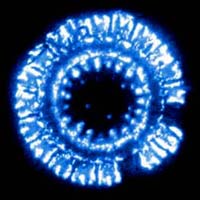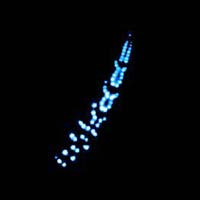| Welcome | Research | People | Publications | Galleries | Courses | Links/Resources | Tech Guides |
|
Propagation of Bioluminescent Signals Underwater Bioluminescence is extremely common in the open ocean and is used for many purposes including sexual signaling, crypsis, warning, luring, and blinding. However, despite its importance, little is known about what these bioluminescent signals look like to various species, after they have traveled through the water and a given visual system. In collaboration with Curtis Mobley (Sequoia Scientific) and Edith Widder (Harbor Branch Oceanographic Institution), we are currently modeling the effects of the medium and the visual system on a variety of bioluminescent patterns using Monte Carlo and Fourier image processing methods. Some of the questions we would like to answer include:
Publications Johnsen, S. (2005). The red and the black: Bioluminescence and the color of animals in the deep sea. Integrative and Comparative Biology. (in press)
|
||||||||||||||||||||||||||||||||||||||||||||
| Duke University | Biological Sciences Bldg, Room 301 | (919) 660-7321 | sjohnsen@duke.edu |
 Sample
Research Projects
Sample
Research Projects


